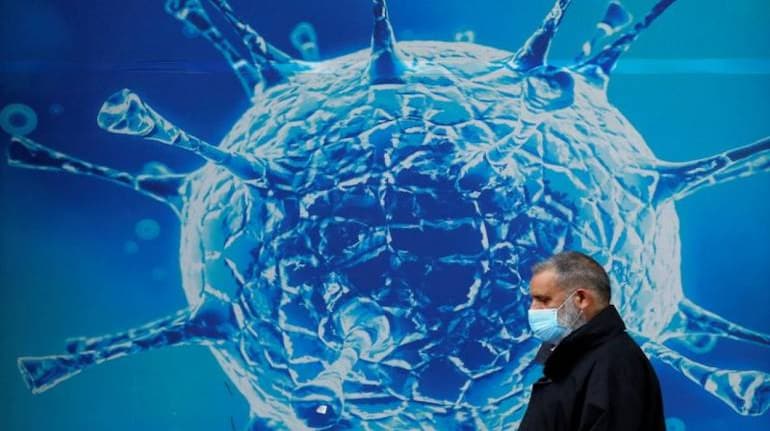



The ghastly sight of refrigerated trucks parked next to large hospitals in New York City during the peak of the COVID-19 outbreak, was disturbing and thought provoking at the same time.
The city’s morgues were overwhelmed by the bodies coming in and the trucks send by the Federal Emergency Management Agency were the only solution available. Several months later, hundreds of bodies are still lying in those freezer trucks, awaiting a respectable funeral.
This happened at a city which is considered by many as the centre of the free world and the hub of global financial capital. We have seen similar situations playing out in several other developed nations. When the world is at the doorstep of imminent vaccination campaigns, we should be asking ourselves about what went wrong.
More importantly, how can we ensure that the situation does not repeat itself through some other pandemic?
One of the most important issues during the early phase of the pandemic was lack of a surge capacity in health systems of many countries. This resulted in lack of intensive care beds in Italy, shortage of emergency physicians in the United Kingdom and medical oxygen running out in Pakistan.
Even though the scale of the pandemic was unforeseeable by any measure, the health systems of most countries were woefully underprepared. Some Nordic and south-east Asian countries could scale up very fast, but most others were left in the lurch.
Historically, healthcare has lagged other sectors in digital transformation. Even in scenarios where technology has aided healthcare delivery, the focus has been on patient care or healthcare for individuals. It’s very rarely that we hear about leveraging the power of social media in early diagnosis of infectious disease outbreaks.
Several Machine Learning (ML) and Natural Language Processing (NLP) tools have shown us that large-scale outbreaks can be predicted using routine communication from people and healthcare providers.
Several bioengineering institutes have done seminal research in developing cost-efficient technologies for expanding intensive care capacity. But it’s not very often that we hear about health system managers adopting any of them. There is a barrier in adopting technology by health systems and most of it is a result of traditional thinking dominating the narrative. This barrier needs to be broken down; and the technology and healthcare domains need to be seamlessly integrated.
Another bottleneck in the optimal delivery of healthcare services was the failure of supply chains for essential medical products in early stages of the pandemic. Plain surgical masks were being rationed in several rich countries and N95 masks were given only to those working in emergency departments or intensive care units.
Those lucky ones who got N95 masks were supposed to reuse them after following some disinfection technique. This author was in Sweden in March 2020, and there were no hand sanitizers available in any super markets.
A rumour regarding an impending shortage of toilet paper was followed by a mad rush to buy the product from store shelves. Closer home, India banned the export of several medicines including Paracetamol and Hydroxychloroquine in early April due to shortage of Active Pharmaceutical Ingredients.
Most of the supply chain failure was because of the concentration of manufacturing in certain countries owing to higher efficiency and economies of scale. The entire value chain of several essential medical products was left vulnerable to external shocks; and healthcare systems had no answer when the pandemic hit.
The efforts taken to shock-proof the global supply chain for healthcare was probably lower than the investments made for optimizing supply chains for fast moving consumer goods! The entire narrative around supply chain strengthening was limited to delivery of drugs to difficult-to-reach areas of sub-Saharan Africa.
There are hundreds of companies specializing in supply chain management but there may be only a handful of them with a robust healthcare portfolio. There is a need to use the best available technological tools to optimize healthcare supply chains, as we can expect several such large-scale disruptions in the form of new infectious diseases or climate change.
Lastly, maintaining a strategic manufacturing capacity for essential medical products may be the right way forward for larger countries and regional groupings. We saw petty diplomacy over drugs like Hydroxychloroquine and Remdesivir; and the rise of ‘vaccine nationalism’ in the case of COVID-19 vaccines.
This debate on localizing manufacturing of essential medical products and active pharmaceutical ingredients (APIs) have been on for some time in several western capitals. But very few countries dared to act on it as it was almost heretic when the world was heading towards a single market. But the pandemic has drastically changed the perceptions and has spurred policy makers to act.
Now, the European Commission is in the process of rolling out a pharmaceutical strategy which is more holistic and covers the entire life-cycle of pharmaceutical products including localised API production to hedge against shortages in the future. Every country should rationally look at options to boost local manufacturing capacity for essential medical products and smaller nations can evaluate possibilities for maintaining strategic stockpiles.
The pandemic has been a painful learning curve for all the health system managers and global health enthusiasts. It showed that the return on investment for health is probably much larger than previously anticipated; and that large scale health issues can easily disrupt the global economic system. When the upheavals caused by the Pandemic ends, our health systems should emerge stronger and every single person should have equitable access to quality-assured healthcare. Technology tools are going to play a big role in this transformation!
Discover the latest Business News, Sensex, and Nifty updates. Obtain Personal Finance insights, tax queries, and expert opinions on Moneycontrol or download the Moneycontrol App to stay updated!
Find the best of Al News in one place, specially curated for you every weekend.
Stay on top of the latest tech trends and biggest startup news.